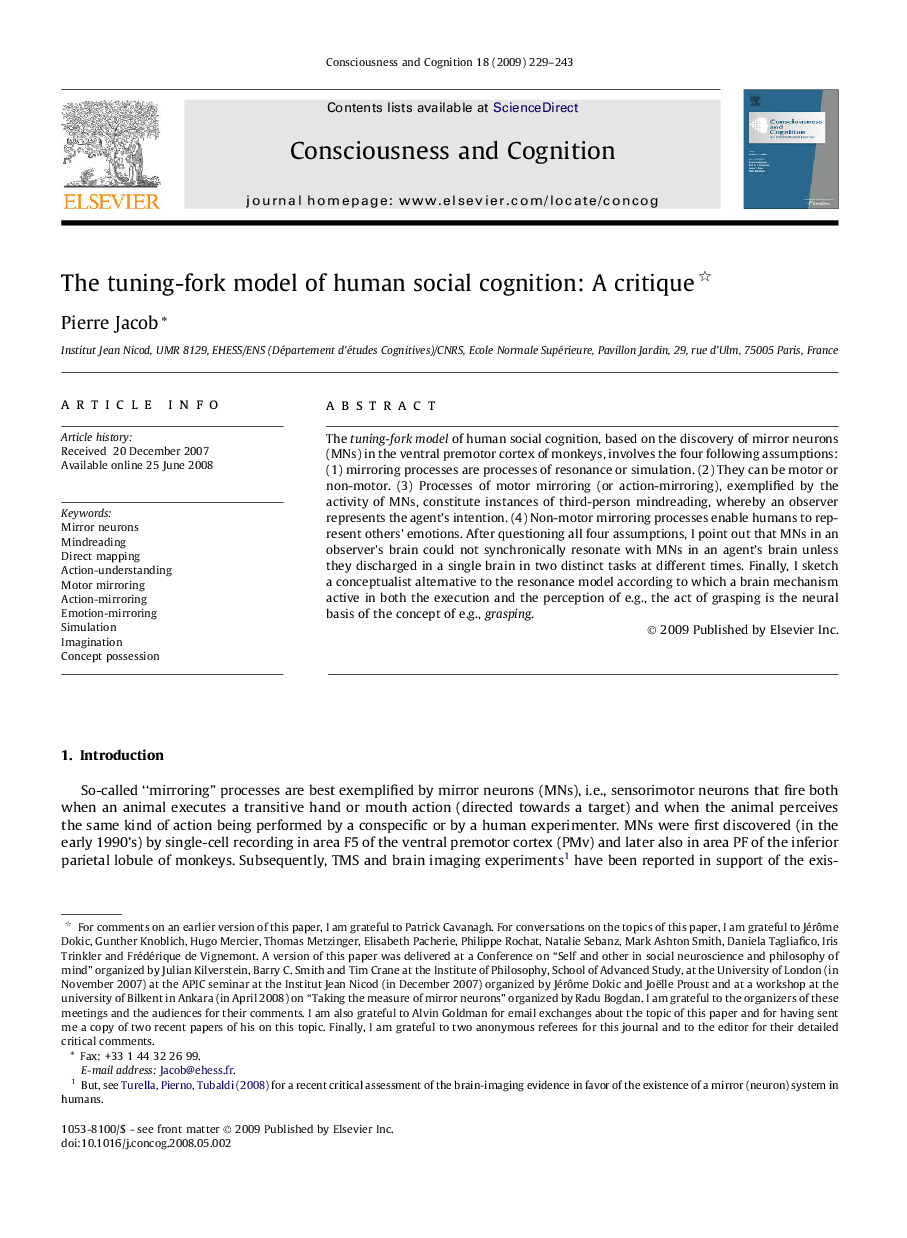| کد مقاله | کد نشریه | سال انتشار | مقاله انگلیسی | نسخه تمام متن |
|---|---|---|---|---|
| 927869 | 922279 | 2009 | 15 صفحه PDF | دانلود رایگان |

The tuning-fork model of human social cognition, based on the discovery of mirror neurons (MNs) in the ventral premotor cortex of monkeys, involves the four following assumptions: (1) mirroring processes are processes of resonance or simulation. (2) They can be motor or non-motor. (3) Processes of motor mirroring (or action-mirroring), exemplified by the activity of MNs, constitute instances of third-person mindreading, whereby an observer represents the agent’s intention. (4) Non-motor mirroring processes enable humans to represent others’ emotions. After questioning all four assumptions, I point out that MNs in an observer’s brain could not synchronically resonate with MNs in an agent’s brain unless they discharged in a single brain in two distinct tasks at different times. Finally, I sketch a conceptualist alternative to the resonance model according to which a brain mechanism active in both the execution and the perception of e.g., the act of grasping is the neural basis of the concept of e.g., grasping.
Journal: Consciousness and Cognition - Volume 18, Issue 1, March 2009, Pages 229–243